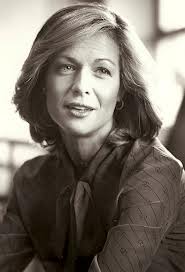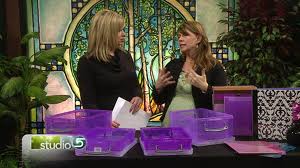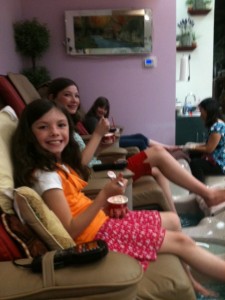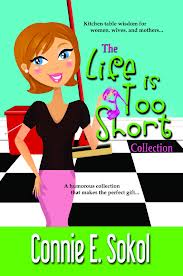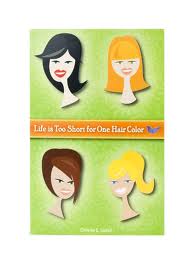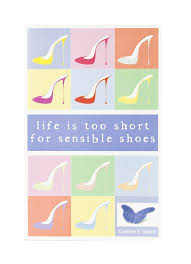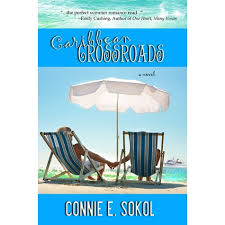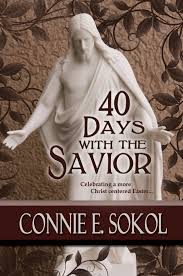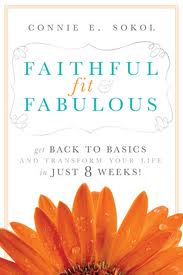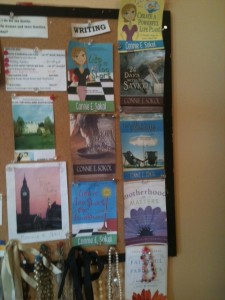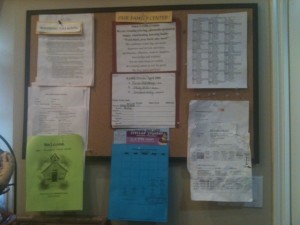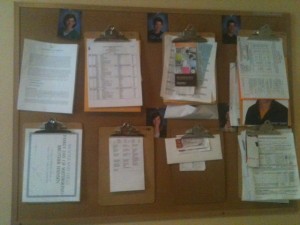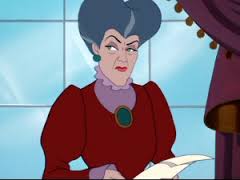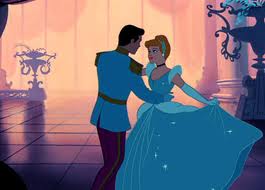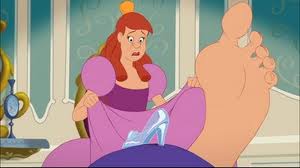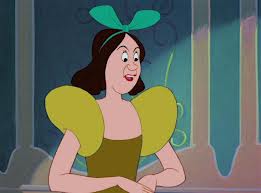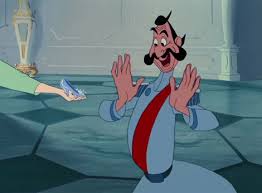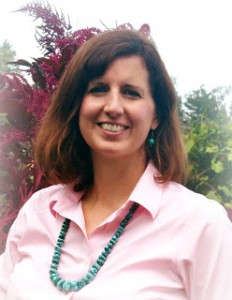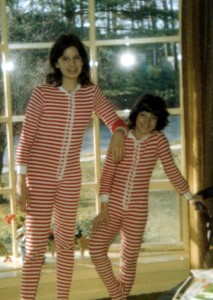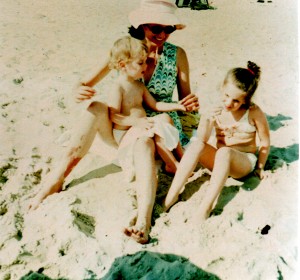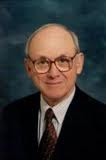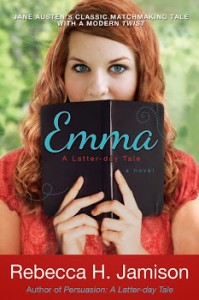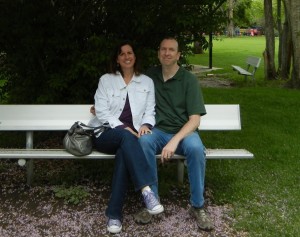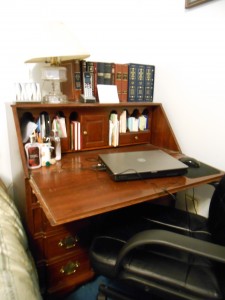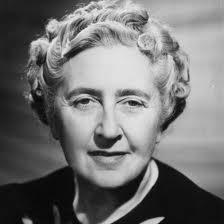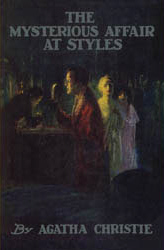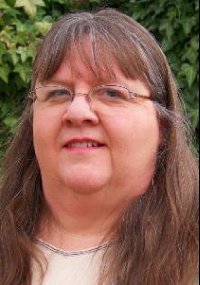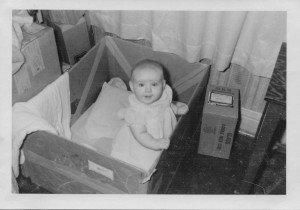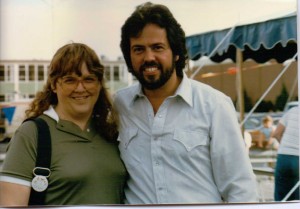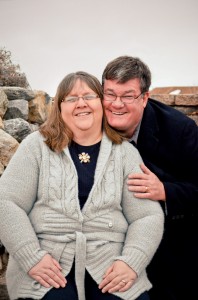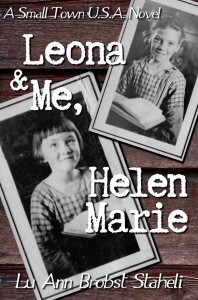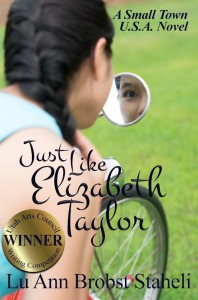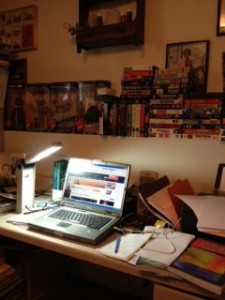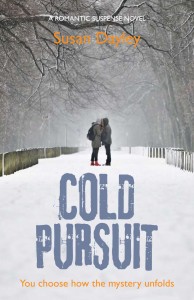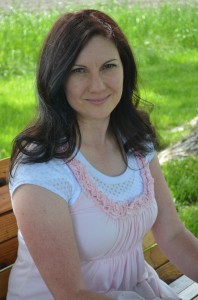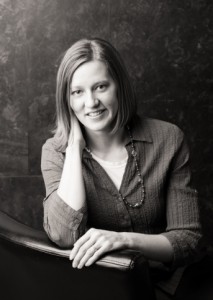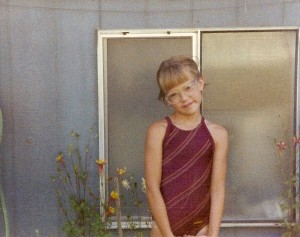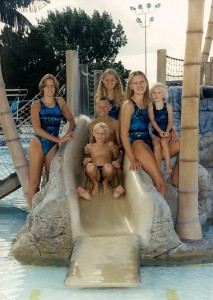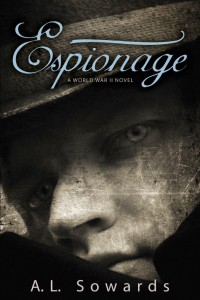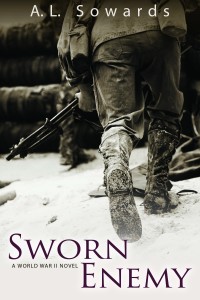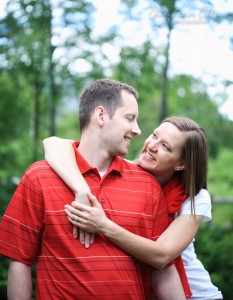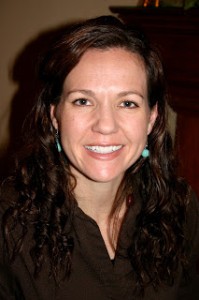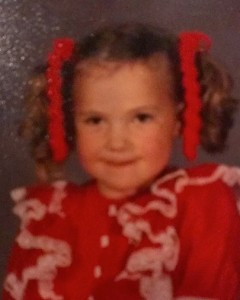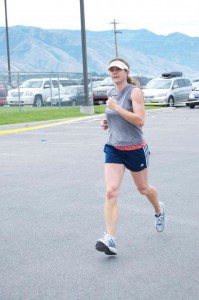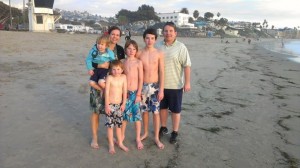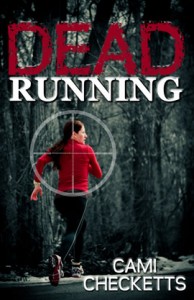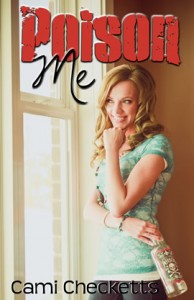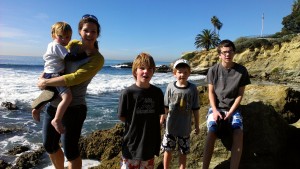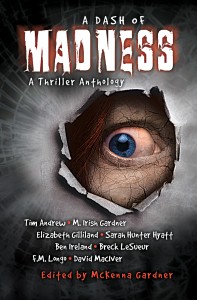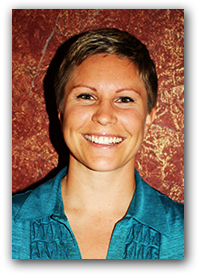When I consider all that Connie has on her plate, I can’t believe she agreed to be interviewed. Where could she find the time in between mothering, writing, and presenting at BYU Education Week? This is, after all, a woman with seven kids who has written eleven books, recorded several talk CDs, and is always on the go (as you’ll come to appreciate a bit later).
Not only did she agree, she took the time to send me detailed responses and even more pictures than I’d requested. I’m going to do my best to post all of them (plus a couple I found myself). Let’s find out what drives her, shall we?
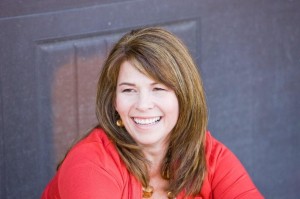 ME: I can’t imagine that, as a young girl, you dreamed of one day becoming a national presenter or author, or did you? What did you dream of becoming when you were young? (And I’d love to post a picture of you as a child.)
ME: I can’t imagine that, as a young girl, you dreamed of one day becoming a national presenter or author, or did you? What did you dream of becoming when you were young? (And I’d love to post a picture of you as a child.)
CONNIE: Although I’ve wanted to be a writer as far back as I can remember, I had several dreams as a young girl (be a broadcast journalist, a teacher, Pinky Tuscadero)…
(Wait, that’s ringing a bell. Hold on a second while I look her up . . . Oh yeah, from the old TV show “Happy Days.” Have a look.)
(Okay, I think we’re all going to regard Connie a bit differently now. :D)
I also had a very strong spy/detective thing going on for a long time. (Me too!) After reading Harriet the Spy, I fingerprinted my family using my watercolor paints, and then I’d observe them covertly, recording revealing information such as which hairbrush was used by whom (to be revealed later at a strategic time).
Very big on Nancy Drew–she always dressed well and then was off to lunch with her friends in between sleuthing. (I read through all 50+ Nancy Drew books–my sister earned the entire set. My tweener daughter and I were at Costco a few years ago and saw 10-book packages of them with those yellow spines. I seriously felt giddy, so we’ve continued the legacy.)
(I bought the same sets for my daughter. I think it’s a mother/daughter bonding thing.)
With that being said, I’ve always wanted to be a writer, but it didn’t hit me until a pivotal moment in sixth grade. My fabulous teacher, Miss Hatch, took my poem called “Paul Revere’s Midnight Ride” to the principal because it was that good . . . and the principal couldn’t believe (so she said) that a sixth grader wrote it. I remember feeling like, “Wow, I could be a writer.” I then immediately began my first serious work titled, Mom and Me. Of course, I quickly disclaimed to everyone that it was not actually about my mom and me.
(Of course not.)
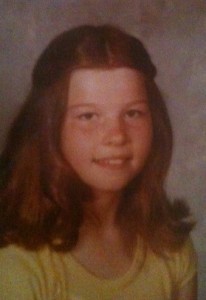 (The blossoming sixth grade poet)
(The blossoming sixth grade poet)
ME: Where did you grow up, and how did your environment and each of your parents affect you as a parent, a woman, and a writer?
CONNIE: I grew up in several places in a fairly dysfunctional family environment. But what I remember most, as far as writing goes, from elementary age on is the vision of my mother reading a book in bed at night, her finger in an L-position with the thumb resting under her chin, glasses half-way down her nose. Something very comforting about that sight.
My mom taught me a lot about parenting, plenty of it helpful, some of it questionable, a bit of it downright laughable. For example, I couldn’t wear nylons as a seventh grader because they were “too grown up” so I was the ONLY cheerleader in knee socks. Or like the time I was asked to do the hula (I’m not bitter here). I was one of only THREE fifth grade girls who would dance in front of the ENTIRE sixth grade, including my then-crush, Shawn, but my mom said NO WAY to a bikini top and hula skirt. I was the ONLY girl (see a trend??) wearing a bright yellow T-shirt standing between bikini-top twins in front of the entire sixth grade.
(Yeah, but what did Shawn think?)
Shawn did not call . . . (Ah, well, every writer needs an experience with unrequited love.)
But now I say, GO MOM, and continue the modesty trend in my own family.
(I sure wish I could have gotten a picture of you in that hula getup.)
ME: When did you realize you had a way with words and influencing people? And when did you begin to understand the responsibility that came with it?
CONNIE: That sounds remotely like a Spiderman theme . . . (Seriously? Hmm, now that you mention it, it kind of does.)
During elementary through high school years, I felt sort of like a personal therapist, and a perpetual third wheel. People would come to me with their problems about guys/girls and then I would intensely try to help them with good answers, after which, they would skip away happily with their guy/girl and I would remain the perpetual third wheel.
BUT this helped me become better at expressing my thoughts, which helped me when writing in my journal or diary (which I started as early as age 10, possibly earlier, but that’s the earliest I’ve kept).
When I started speaking and writing things that people would actually read, that’s when I understood the power and responsibility of words. Women would, and still do, email me, saying how something I’ve written or a product they’ve purchased has changed their or their family’s lives. It’s a sobering thing to realize people actually read what you write, and then will do the things you might suggest. Keeps me on my knees and trying constantly to live what I share.
ME: Okay, how did you go from being an Elementary Ed major at BYU to radio, TV, and the Deseret News? (And I have to have a picture of you in a TV studio.)
CONNIE: I’d wanted to be a broadcaster back in the Jessica Savitch days (if anyone remembers those days).
(I do! I LOVED Jessica Savitch. In fact, here’s a picture of her:)
(The inspirational NBC News Anchor, Jessica Savitch)
I went to BYU, thinking that was my star and then felt impressed to serve a mission (even though I was totally unprepared–when I was in the MTC doing a mock discussion with “investigators,” one of them pointed to the picture in the Book of Mormon with Mormon and Moroni and said, “Who is that?” I paused and said, “That’s Moses, pointing to the Promised Land.”).
(Okay, nobody can accuse Connie of never being self-deprecating.)
After my mission, I put serious thought into the realities of a future family, and I realized broadcasting wouldn’t work for me. Then I felt impressed to do Elementary Education. UGH. At the time, it occurred to me that was the major for girls who baked things for guys and didn’t plan on finishing a degree. But I’m so glad I switched. I finished my degree :D AND I baked things for my husband–AFTER we were married.
After we had children, I sort of put those dreams to the side, trying to survive young children (at one point, four kids under six). But then someone suggested I apply to speak at Especially for Youth. I agreed but was so nervous and embarrassed that I waited until the night before the application was due, then made a truly hideous video sitting in a white suit by my Christmas Tree. After a few years of EFY (Hey, it must not have been that hideous . . . maybe you look extra good in white.), friends suggested I do Education Week–that was twelve years ago when they weren’t as selective, I think.
Then Bonneville Communications asked me to audition for a family TV series (RIGHT after I’d had a baby AND had braces at the age of 40 . . . lovely). So I did that for 13 episodes (filming three or four episodes on a Saturday about every few months). That led to me being on Studio 5 with a frighteningly lame opening segment (the team at Studio 5 amazingly allowed me to continue to try to find myself on screen).
(And even though she didn’t send me this, I tracked down a photo of Connie on Studio 5.)
Meanwhile, Bonneville started a women’s radio station, “Ask a Woman”, and invited me to be on daily from 3 to 6 p.m.
In a pivotal conversation I said I couldn’t do that as I was basically an at-home mom, but I could do Tuesday/Thursday from 12 to 3 p.m. They kindly agreed and for six months I hosted my own show those days, working the radio board myself, and often writing the show content on sticky notes while driving to the Salt Lake studio about an hour away.
(Are you beginning to get an idea of the energy of this woman?)
As for Deseret News, it was during that same radio year that I submitted my columns, and was summarily rejected. After overcoming the disappointment with a really good dinner and dessert, I let it be. A year later Deseret News asked me if I wanted to write a regular column, which I did twice a month for about four years, after which I stopped writing for magazines and newspapers and several others things when our family shifted into a busier stage of life (and fewer kids’ naptimes).
(Okay, I’m exhausted. Dinner break.)
ME: (Ready to go again after some fish and a baked potato) Given your experience, what should a writer develop first, platform or product. And does it make a difference whether it’s fiction or nonfiction?
CONNIE: Writing is a passionate experience so I believe a writer should go with what he/she is passionate about. If it’s a fiction novel that’s bursting to be told, write that. If it’s a cause you can’t get out of your head, pursue that. At the end of the day, though, having a platform—a clear and useful focus for that passion—is a dynamic combination. I feel like it’s a win-win; writing is therapy for me, and I’ve been told it’s helpful to the women reading it. That makes me feel I’m doing good in some way all the way around. I do believe nonfiction has an easier time and is a generally better vehicle for carrying that platform, although fiction has a beautiful, memorable way of threading it, too.
ME: You seem so involved all the time (to the point that you find an appointment at a hair salon to be a waste of time). What, to you, is an ideal way to re-charge your batteries? (And if you have a photo of you doing it, I’d love to post it.)
CONNIE: I absolutely love date-night and overnighters with my hubby; to play games like Trouble or Pit with my kids, or gather on our king-size sleigh bed with popcorn and an oldie movie (“The Court Jester” is a fave and we recite the dialogue frequently—“The vessel with the pestle has the brew that is true…”); or to have quiet writing time to myself which is positively delicious, though scarce right now. I crave Zumba, delight in butter cookies and cold milk, and to devour a fabulous book that keeps me up until 2 a.m., LOVE when that happens (although not the day-after).
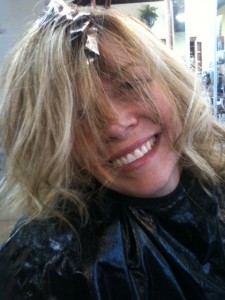 (Connie wasting time at the hair salon)
(Connie wasting time at the hair salon)
(Her daughters not wasting time…ice cream and pedicures are never a waste of time)
ME: Tell us about your latest book and how you came up with the idea for it.
CONNIE: I came up with THE LIFE IS TOO SHORT COLLECTION because I wanted a great gift book that I could keep in the hopper for all those times that I forgot to get an incredibly thoughtful gift for friends, visiting teachees, etc. I didn’t want a downer or a to-do, but something every woman over 20-ish could relate to and laugh with. Something upbeat, candid, happy, not sappy, with substance but not a heavy meal.
The result is close to 200 pages of one to two-page essays of what I call “kitchen table wisdom with a side of humor.” It’s a compilation of the most humorous and popular essays from my other three books: LIFE IS TOO SHORT FOR ONE HAIR COLOR (Now the picture above makes more sense . . . you were working, not wasting time. :D), LIFE IS TOO SHORT FOR SENSIBLE SHOES, and LIFE IS TOO SHORT FOR LINOLEUM.
I have loved, loved, loved the response from women. One of my favorite experiences was at a Costco signing and hearing a woman laughing hard from almost the other end of where I sat. When I looked behind me she was at the table of books, reading from mine—woo hoo!
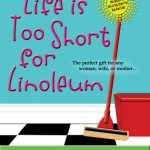 ME: What are you working on now, and what do you have planned in the near future? Also, how would you describe your writing process?
ME: What are you working on now, and what do you have planned in the near future? Also, how would you describe your writing process?
CONNIE: I’m working on finding my writing bag, never mind the time to write (with seven kids including a 15-month-old, and me at the age of 47, it’s a little hard to remember where I or my little one has left it…)
 (Here’s a picture in case any of you have seen it. A writing space I’ve heard of, but a writing bag?)
(Here’s a picture in case any of you have seen it. A writing space I’ve heard of, but a writing bag?)
I’m working on a romance series involving four old college friends of diverse ages and situations who, at a reunion, and through a life-changing event, challenge each other to achieve a bucket list dream within the year, facing unexpected trouble, defining decisions, and toe-curling romance while in England, Paris, and Italy.
(Sounds terrific! Now I understand the “research” trip to Italy I’d heard you were planning about a month or so ago.)
My writing process is a mix of passion, organization, and timing, and the amount of each depends on the type of book. When I wrote my romance, CARIBBEAN CROSSROADS, I did the full rough in about 60+ hours. LOVED that experience, could see whole scenes in my head and scurried to write them down.
With 40 DAYS WITH THE SAVIOR, it was my scripture study for the holiday season that unexpectedly turned into a daily blog post that turned into a book/e-book.
With FAITHFUL, FIT & FABULOUS, it’s been a love labor of over ten years, living principles and practices, and fine-tuning them to their most practical and easy-to-use versions, then distilling those things down to absolute gems to help women and families live a more fulfilling and focused life.
I’m a sort of hybrid personality—a serious organizer but passionate writer, so the two fight a bit to see who needs to win today to get something done.
(That must be a fascinating struggle to watch. Maybe I should have interviewed some of your kids about you. :D I think the organizing wins out, though, based on the two pictures of her “writing boards” that she sent):
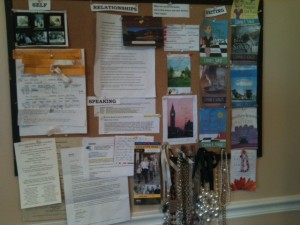 (I get the different categories, but what’s with the jewelry?)
(I get the different categories, but what’s with the jewelry?)
(I think she’s going to need a bigger board)
ME: With all that you have going on, plus a family of seven kids to care for, you must be a supreme organizer. What are your top three tips for organizing?
CONNIE: Speaking of organizing…I love being organized but with a big family I’ve had to accept the fact that my garage will never be tidy (muttering under my breath about scout equipment…) And that someone will always leave the garbage lid open just enough for the neighbor dogs to desecrate. And that the laundry will be Taylor Swift never, ever, EVER be done (because even if the counter is clear and the tubs are empty, WE ARE ALL WEARING CLOTHES THAT WILL NEED TO BE WASHED).
Hmm, my three top tips. That’s hard because what worked three months ago doesn’t necessarily work today. But here are few stand-bys:
We have an active board in the kitchen (See top picture above) with family mission statement (that no one but me remembers), goals (which still have April 2002 on it), important immediate papers and to dos, reading award/food certificates, chore charts, etc. Then a passive board in my office (See bottom picture above) with a picture of the kids and a clipboard underneath for really, really important things that can’t be lost (or if they are, it’s not my fault, because kids didn’t put it on The Board). These boards have saved my bacon so many times.
2. Kids’ Zones:
Each child has a cleaning zone they do for two weeks (they “Deep Clean” once a week then tidy daily, or at least are supposed to). For the Deep Clean it used to take us three hours of nightmare “working together” and bitter tears. But now, they do their zones, bedrooms, and bathrooms in about 30-60 minutes, with minimal tears, and it actually stays clean for an entire day…ish.
(Take note, mothers!)
3. Find Your Rhythm:
I’ve had to stop fighting my family’s messy rhythms and work with them. For example, my hubby likes to drop clothes by the side of his bed, so I just make sure that his side is always the one away from the door and can’t be seen. And we don’t do chores on Saturday—that’s for a project or fun (or both). Instead, we do the Deep Clean on Monday or Tuesday afternoons. Lastly, I allow myself The Abyss—a room, any room, that I can simply stuff boxes and whatnots in when life requires (i.e. speaking at Education Week, cleaning out another room/closet, mother comes to visit, etc.)
(Great advice!)
ME: Finally, please describe how you’ve organized your workspace and the five items on your desk that are unique to you. (And I must have a picture.)
CONNIE: I use three “places” as workspaces. (Why am I not surprised?)
1. My hubby’s massage chair that looks out the window for fun writing (so admin stuff doesn’t cloud my mind).
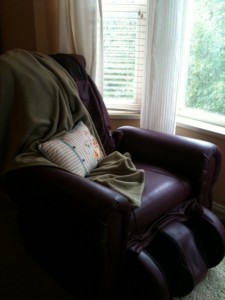 (Complete with blanket and pillow)
(Complete with blanket and pillow)
2. My “Jane Austen” desk for functional writing like To Dos.
 (Nice. Jane would approve, I’m sure. Click on it to make it larger for the other answer.)
(Nice. Jane would approve, I’m sure. Click on it to make it larger for the other answer.)
3. My writing bag, a hideous red bag which makes it easier to find and quick to tote for writing on the go.
 (Here it is, again. Have you noticed her fondness for the word “hideous”?)
(Here it is, again. Have you noticed her fondness for the word “hideous”?)
The five unique things on my desk (and thanks to this interview, they are now nicely situated and dusted) are:
1. Picture of my family–to remember who, what, and why I write.
2. Gratitude plaque–a gift from a speaking assignment that reminds me of the daily gift that I get to be a mom of seven AND write/speak/help women and families on the side; that all the talents He gives me are to be used for good.
3. Flowers my mom sent me when I released CARIBBEAN CROSSROADS and it hit number one on the Amazon Fiction Bestseller list. (Congratulations!) Despite a traditional publishing offer, I went with my gut and self-pubbed it. (Yay!!) Reminds me to go with my gut!
4. A statue of the Eiffel Tower–earlier this year I had an unexpected opportunity to travel to Paris, France with my daughter and baby to not only help a friend but to do research for the novel in the works (see above) that is set in, what else, Paris, France. This reminds me to open my mind and heart to dreams, to prepare for them, and to always set my books in exotic locations. I’m now opening my mind to Italy . . . (Hey, I’m still pretty fluent in Italian. Want to take me along?)
5. My Joy Wall–this is a place I put cards, thoughts, and sweet notes from family, friends, and people I’ve met that say very nice things to me. This is for days when people do not say very nice things. (I think most authors can relate.) It reminds me what to focus on. :D
All of Connie’s books, as well as other products, are available on her website, several are also available on Amazon, and you can certainly keep up with her schedule on her website or on Facebook.
I’m interviewing the first of one of my fellow local Barnes & Noble authors next Wednesday. You see, our local store had a “Pacific Northwest Authors Event” last Saturday and I was invited to do signings with over twenty other authors, including M. Ann Rohrer, who’ll be kicking off my Pacific Northwest Writers series of interviews. Many of the rest will follow.
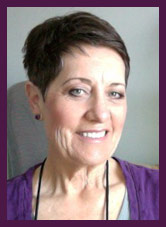 (She also happens to be in my local ANWA chapter)
(She also happens to be in my local ANWA chapter)
If you’re a published author living in the Pacific Northwest and you haven’t yet been interviewed by me, now is a good time to schedule an interview. Just email me at tanyaparkermills(at)mac(dot)com.
Originally posted 2013-08-28 13:10:10.

